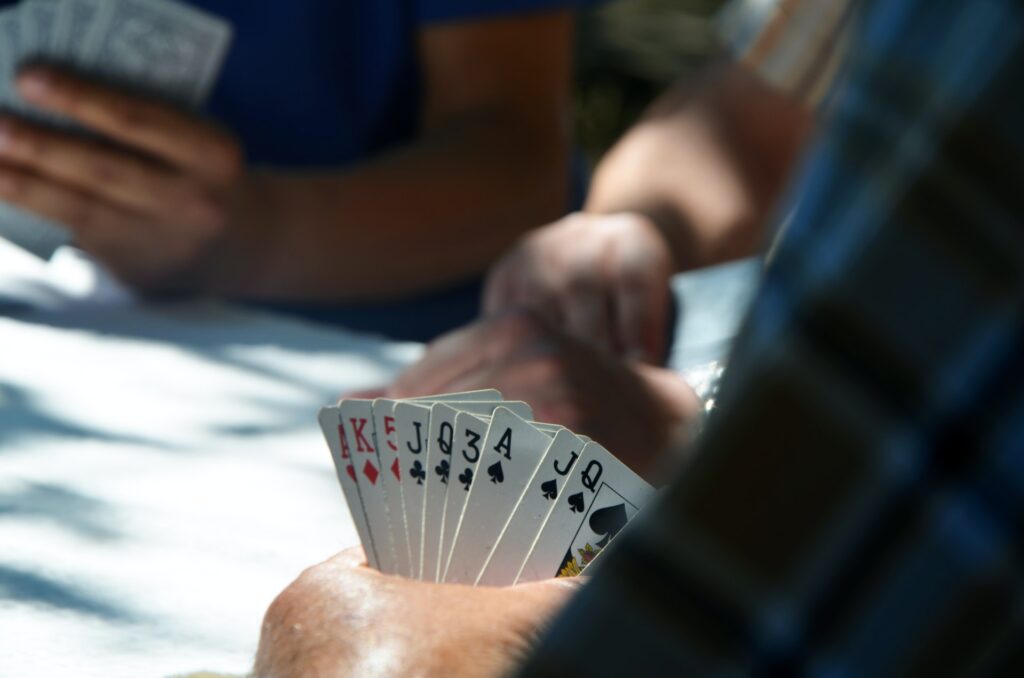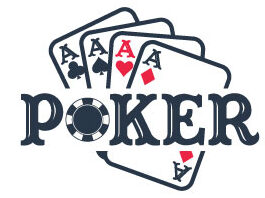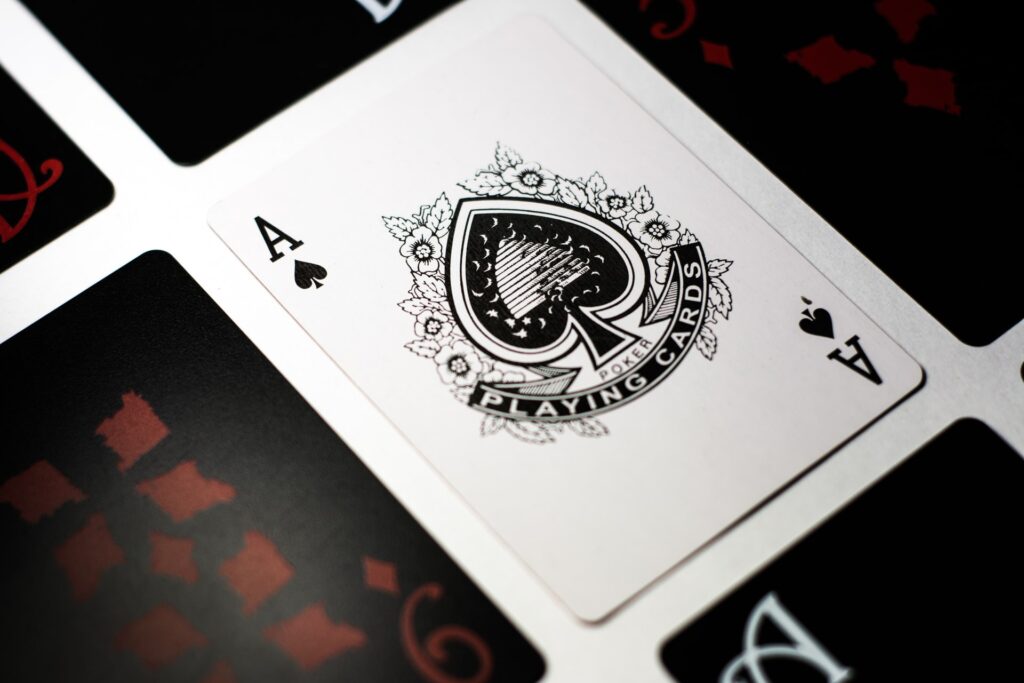Poker games come in various structures, yet the majority of those various types of poker share numerous similar fundamental principles.
Most poker games use the standard poker hand positioning framework, so it’s critical to realize which hand wins straight on when you turn your cards face up. Wagering structures, similar to no-restriction, pot-limit, and fixed-limit, can be applied to various games.
Here is a short outline of a portion of the fundamental standards of poker. If you have any desire to perhaps find any way to improve on the principles of a particular poker game, click one of the buttons above.
Hand Rankings
In most poker games, players are entrusted with attempting to make the best five-card poker hands utilizing standard poker hand rankings.
The accompanying hand rankings apply to most poker variations, beside the couple of games that utilization lowball hand rankings. The best poker hand is an imperial flush, the second-most grounded hand is a straight flush, etc down the rundown, until you get to high card, the least hand positioning.
Illustrious flushes and straight flushes, alongside four of a sort, full house, three of a sort, flushes, and straights, frequently address the best hand when a confrontation starts.
Poker Hand Rankings

Blinds and Antes
The little visually impaired and huge visually impaired work as constrained wagers that structure the foundation of the game in numerous poker variations. Texas Hold’em and Omaha, the two most famous poker games on the planet, utilize the blinds framework, and it’s essential to know precisely the way in which these required wagers work.
In games that utilization blinds, each hand starts with the large visually impaired set one situation to the immediate left of the little visually impaired. Players in these positions should place in foreordained wagering sums before each hand. The little visually impaired is in every case straightforwardly to one side of the seller button.
The cost of the little visually impaired is generally half (or near portion) of the cost of the large visually impaired. The blinds are posted by the two players straightforwardly to one side of the player on the button.
For poker cash games, these sums are for the most part noted in the posting for the game. For instance, a $1/$2 cash game at a live club implies the little visually impaired is $1, and the huge visually impaired is $2.
In most poker games, the base permitted bet for any round of wagering is equivalent to the enormous visually impaired sum.
Risks are obligatory wagers that are here and there posted by all players at the table, or by the large visually impaired player in certain organizations.
For instance, a $5/$10 cash game with a $1 risk requires every player at the table to put $1 in the pot before each hand. This is notwithstanding the blinds, significance pots in games that utilization a risk get going greater than games without a bet.
Limit versus No Limit
No Restriction
The expression “no restriction” appears to be adequately straightforward. In any no restriction poker game, players can wager each of their chips whenever.
Most no-restriction games utilize an arrangement of blinds and a button, and for more on that framework look at Blinds, Antes and The Button.
For instance, suppose we’re noticing a no restriction hold’em cash game, played at $1/$2 stakes. In this model game, six players are situated at the table, each with $200 in chips.
The little visually impaired posts $1, and the huge visually impaired $2. The cards are managed, and the player straightforwardly to one side of the enormous visually impaired begins the preflop wagering round. In every single resulting round, the little visually impaired, or the principal player to one side of the little visually impaired, begins as the main bettor.
In a no restriction game, this player can wager any sum, up to all of his/her chips. Assuming that this player bets the entire $200, this is known as betting everything.
Whenever during a hand, any player can bet everything. Note that the greatest sum for an all-in approaches how much chips before a player when the hand begins.
Limit
Numerous poker games, similar to stud poker variations, are quite often played with limit wagering rules. Any poker game can be played with a cutoff wagering structure, in any case.
A Limit Texas Hold’em game played at $2/$4 restricts for the most part implies the blinds are $1/$2. Limit games are played with a “little bet” and a “major bet”, with the huge visually impaired normally equivalent to the little wagered.
Many cutoff games utilize a construction where the greatest bet/raise is equivalent to the little wagered in the early adjusts of wagering and increments to the large wagered sum in later wagering adjusts. In each round, the wagering is “covered” after three raises, and resulting players can call after that.

The Actions
In some random poker hand, the dynamic player should pick among four unique activities:
1. Call (matching how much the ongoing open bet or raise).
2. Raise (increment how much the ongoing open bet or raise, which any ensuing players must essentially match to remain in).
3. Fold (driving their cards into the center and giving up any opportunity to win the hand).
4. Check (pass the activity to the following player without wagering anything. Checking must be involved when there’s no open bet or raise before you.
Cash Game Stakes
Go to a poker room and you could see a showcase with posting like “$1/$2 NL Hold’em” or “$4/$8 Limit Hold’em”.
The “$1/$2 NL Hold’em” posting signifies a No Limit Texas Hold’em game with a $1 little visually impaired and $2 large visually impaired. The “NL” descriptor implies this game purposes a no-restriction wagering structure, in which players can wager every one of their chips whenever.
The “$4/$8 Limit Hold’em” posting shows a Texas Hold’em game with a $4 little visually impaired and $8 huge visually impaired. This game would be played with limit wagering rules, importance there’s a cap on what a player can wager in each wagering round.
For more on wagering structures, investigate the “Breaking point versus No Restriction versus Pot Limit tab above.
When in doubt, a standard purchase in for a no-restriction cash game is multiple times the huge visually impaired. The $1/$2 NL game would include a standard purchase in of $200.
A 200NL game means a $1/$2 No-Limit Hold’em game, with a maximum purchase in of $200. This documentation style generally shows a game where the most extreme purchase in is 100 major blinds.
Competition Stakes
Competition still up in the air by the amount it expenses to get involved with the competition. Any poker game, including Texas Hold’em, Pot Limit Omaha, 7 Card Stud, draw poker games, and others, can be played with a competition design.
The blinds in a money game stay something very similar all through. Taking a seat at a $2/$5 No-Limit Hold’em cash games implies the blinds will be $2 and $5 however long you sit in that game.
Poker competitions, notwithstanding, utilize a framework where the visually impaired sums increment at ordinary stretches. In the WSOP Main Event, for instance, Level 1 beginnings with the blinds at 100/200. Each level endures two hours, and after Level 1 is finished, Level 2 is played.
Level 2 adds a major visually impaired bet to the design and is played at 100/200/200. Level 3 sees the blinds and bets increment to 200/300/300, and the increments proceed with each time another level starts.
Competition poker chips have no money esteem, as the up front investment of a given competition decides how much cash goes into the award pool.
Fundamental Texas Hold’em Rules
Texas Hold’em remains as the world’s most famous and notable poker game. Most of money games, competitions, and home poker games all over the planet are Texas Hold’em games.
Every player in a Texas Hold’em game gets two opening cards, and five local area cards are managed face-up on the board. The object of Texas Hold’em is to make the best five-card poker hand utilizing any blend of opening cards and local area cards.
The vendor starts each game by appropriating these cards each in turn to every player, beginning with the player in the little visually impaired position. Opening cards are held face down all through the game, and must be seen by the player holding them.
After each player has two opening cards, the first of four rounds of wagering starts. Texas Hold’em wagering adjusts are known as preflop, failure, turn, and stream.
Once the preflop wagering round is finished, the vendor sets three cards face up on the board, and these local area cards are known as the lemon. After a series of wagering from every single dynamic player, a fourth card (the turn) is managed. One more round of wagering happens before the fifth and last card (the waterway) is managed. The waterway is trailed by one last round of wagering.
After that last round of wagering, all leftover players turn their opening cards face up. This piece of the hand is known as the standoff, and the best hand succeeds at this as indicated by poker hand rankings.
Essential Omaha Poker Rules
Omaha Hold’em (otherwise called just Omaha) is a game that plays like Texas Hold’em, however with a couple of key contrasts.
Like Texas Hold’em, the object of Omaha is to make the most ideal five-card hand, utilizing a mix of opening cards and five local area cards.
In Omaha, nonetheless, players are managed four opening cards and should make a five-card hand utilizing precisely two opening cards and three local area cards. This contrasts from Texas Hold’em, where players get two opening cards, and can utilize any blend of opening cards and local area cards to make the best five-card hand.
There are two normal adaptations of Omaha that are played all over the planet, customary Omaha and Omaha Hi-Lo (otherwise known as Omaha Eight or Better).
Omaha Hi is normally played with either pot-breaking point or cutoff wagering rules. For to a greater degree toward the different wagering structures in poker, look at our manual for Poker Betting Rules.
Pot Limit Omaha is regularly called “PLO”, and is the second-most well known poker game on the planet, behind Texas Hold’em.
Seven Card Stud
Stud is quite often played with limit wagering rules. For more on limit game designs, including references to the “little bet” and “enormous bet” referred to all through this article, see our manual for Poker Betting Rules.
Stud is not normal for Hold’em and Omaha, where two players to one side of the vendor post blinds. All things considered, every player at the table posts a risk, normally worth 5% of the large wagered.
The player who gets the most minimal positioning entryway card posts a constrained bet called the acquire which is worth multiple times the risk. In the event that they so decide, this player may likewise finish the bet, by posting the whole little wagered.
In a $5/$10 Seven Card Stud game, players would post $0.50 bet, and the acquire would be $2.50. Assuming the player decided to finish, they would have to pay $5 (how much the little wagered).
There are no local area cards in stud games. All things being equal, every player in Seven Card Stud gets seven novel cards. The principal managing road incorporates two down cards and one face-up card to every one of the players. The subsequent round and three additional wagering adjusts begin from that point forward, with every player managed an extra card in each round.
After every one of the seven cards have been managed, the players will be left with three cards face down and four cards face up. After the last round, the player’s hand that positions best wins.

Razz
Razz is a variation of Stud with practically indistinguishable interactivity, however hand rankings are turned around. While Stud follows the ordinary high hand poker rankings, Razz follows the A-to-5 lowball hand rankings.
Nonetheless, there are no high hands in Razz, and that implies there are no capabilities for low hands. A player can have a Queen low or a couple or more awful yet win the hand, inasmuch as their hand is lower than their rival’s at confrontation.
Hello Lo
Hello Lo games play with the best high hand winning portion of the pot, and the best low hand wining the other half. The low hand must “qualify” with something like five cards under 8 to win half of the pot. This game purposes the A-to-5 lowball rankings for low hands, meaning straights and flushes don’t represent a mark against your hand.
It is feasible for a player to win both the high and low partitions of the pot-known as “scooping”. Assuming there is no passing low hand (five cards under 8), the best high hand will scoop the entire pot.
Howdy Lo games are otherwise called parted pot games as well as eight or better. Omaha 8, for instance, is an Omaha poker game played with hello there lo rules.
Short Deck
Short Deck Hold’em is an activity game basically the same as Texas Hold’em, aside from it’s played with a 36-card deck, with all of the 2s through 5s eliminated. This game is otherwise called 6 Plus Hold’em.
With the 2s through 5s eliminated, nonetheless, there is a key hand positioning change: a flush beats a full house. Flushes are more extraordinary, with only nine cards of each suit in the deck. Thus, the flush positions in front of the full house in all short-deck varieties.
In a few more uncommon variants of Short Deck, there is an extra change: three-of-a-sort beats a straight. Straights are numerically more normal than three-of-a-sort in short deck poker, so three-of-a-sort beats a straight in specific forms. Attracting to a straight is substantially less engaging with this standard set up, as you are drawing dead assuming your rival has a set or excursions.
Experts can in any case be utilized to make the low and high finish of a straight, thus the least conceivable straight is A-6-7-8-9 rather than A-2-3-4-5.
Notwithstanding, the more normal rendition of Short Deck poker positions straights in front of three-of-a-sort (despite the fact that straights are more normal). At the Triton Poker Series, they played with these hand rankings to advance activity.
Since these various variants exist, you ought to generally twofold actually look at the hand rankings of the game you’re in.






More Stories
Ja Morant wants to see one change in the NBA next season
5 Tips to Help You Win at Sport Pokers
The History of Blackjack